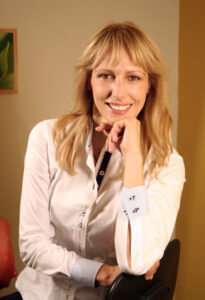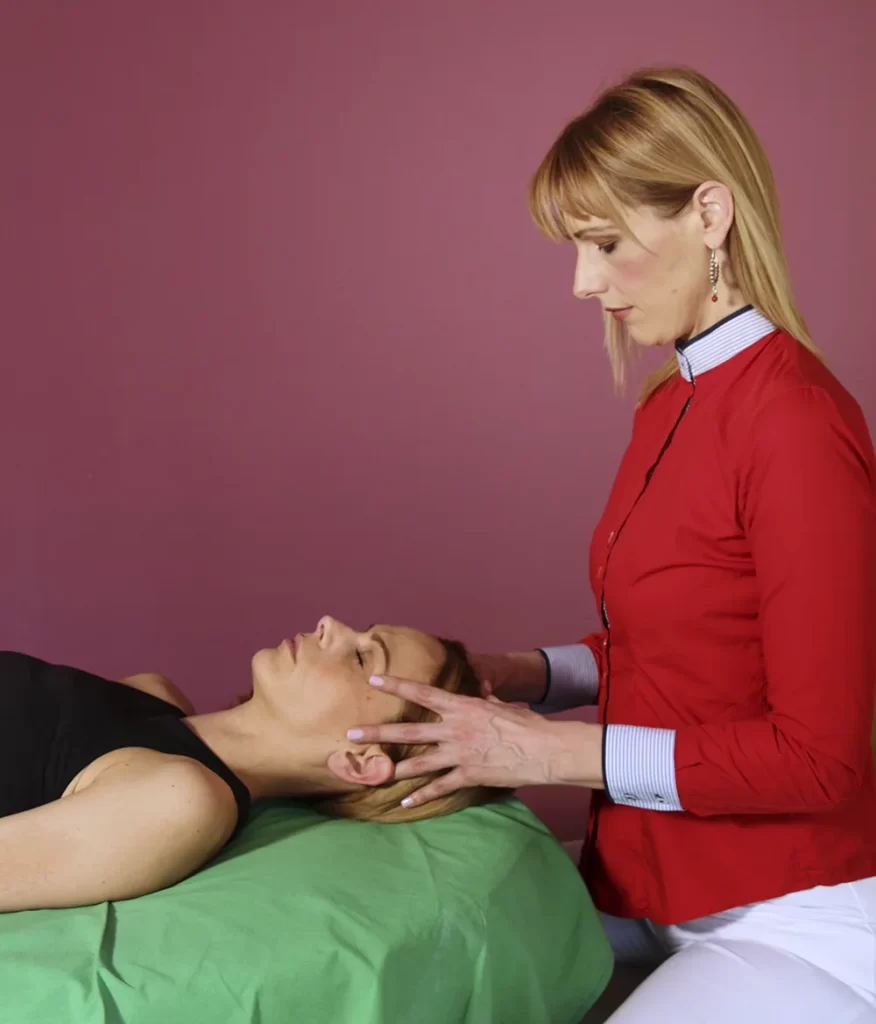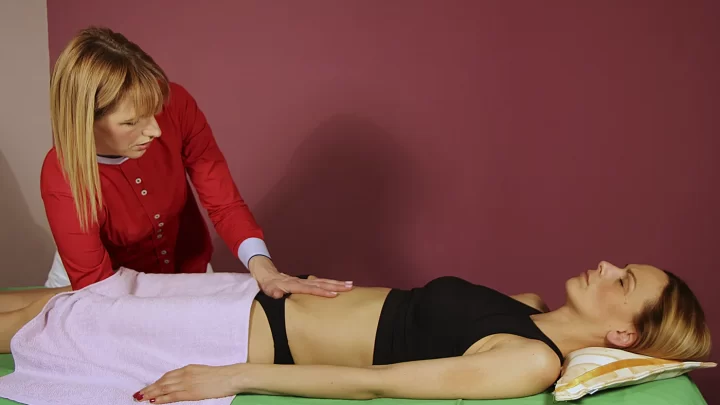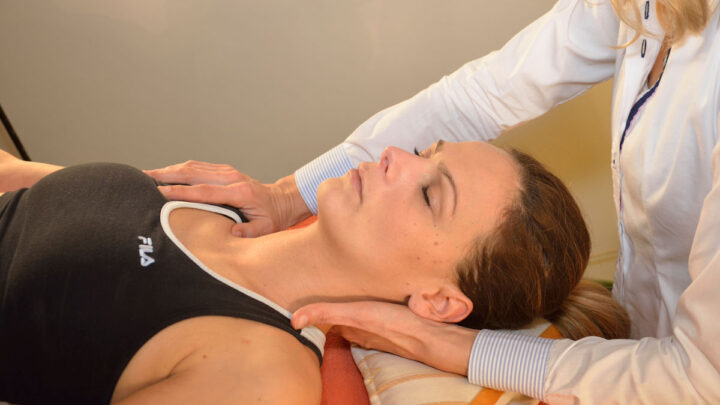During an osteopathic therapy, osteopaths apply various techniques that can be roughly divided into sensory, functional, myofascial and structural. In fact, in osteopathy there is a whole range of techniques and many of them are the combination of the above mentioned. Some techniques have developed into their own unique systems. Therefore, there are osteopaths specialised in particular techniques or to work with children, which is a skill on its own and requires a particular approach as well as additional training. Every osteopath, no matter the area of expertise, has to follow osteopathic laws and principles.
Basic Laws and Principles of Osteopathy:
- All body parts are functionally interrelated and influence each other. Fascias connect the whole body.
- It is necessary to establish good circulation (venous, arterial, lymphatic, of the cerebrospinal fluid) which leads to better blood flow, cell nutrition, waste product removal from the cells, better tissue quality and the healing process support.
- Structure governs the function and vice versa – only a healthy structure performs all designated functions and the other way around. The structure treatment (bones, nerves, blood vessels, organs …) releases the functions (blood flow, movement, sleep …) which are conditioned by those structures.
- Autoregulation and homeostasis – the body has the ability to self-heal, which enables it to achieve health. In every human body there is a natural health mechanism that can never become sick, although some existing blockages can severely reduce its acting. This system, using the biodynamic forces, removes all restrictions and in this way helps the body to self-repair. We find autoregulation even in animals. When sick, they simply lie down and wait to self-heal. In osteopathy, this mechanism is known as the Breath of Life.
- Osteopathic approach is global; it never treats the local symptoms only but also looks for the root causes of problems.
- The patient is treated holistically – on a physical, emotional, psychical and spiritual level.
- The focus is on heath rather than an illness. Osteopathy treats neither illnesses nor diseases, it treats the whole person. Every patient is approached individually.
- Manual palpation is the most important part of osteopathic diagnostics. In osteopathy, there is an expression Tissue Dialogue, the art of tissue palpation consisting of listening, presence, neutrality and a broader view.
- It is not osteopaths who cure the patient. They are only the fulcrum – the point of balance used by the patient’s body, whereas the healing process is done by the patient’s own self-repair health mechanism. The role of osteopaths is to enable the biodynamical forces of the body to heal itself.
- Every person has their own vital potential.
When we take up the principles, we get down to Nature. It is ever willing, self-caring, self-feeding and self-protecting. — Autobiography of A. T. Still
How Does Osteopathy Work?
Osteopathy aims to improve all bodily functions, parts and systems. It is based on the philosophy that the body itself has a natural ability to both self-regulate and self-heal. For this process to happen, unhindered circulation is essential. It includes: blood, lymph, synovial fluid, digestion, cerebrospinal fluid and every other internal or extracellular fluids. Bodily fluids can contain hormones, enzymes and their secretions, immunologic and anti-inflammatory factors, nutritional elements and oxygen.
Blockages that hinder the circulation of all bodily fluids, impede movement and hamper normal body functions are called osteopathic lesions. They are the focus of both osteopathic evaluation and treatments. Osteopathic lesions are functional lesions that can be physiological or non-physiological and are to be distinguished from medical pathological lesions. Blockages can even include emotional patterns that the body has adopted, but which are often reactions to stressful past or present incidents or simply learned body movements adopted by a person and repeated in specific situations. Structural changes lead to organ and tissue function disturbances and vice versa.
In time, the body gradually loses the capacity for both self-regulation and self-healing, which can be brought on by the process of ageing, trauma, accidents, disease, surgical scars, birth, repeated actions or cumulative effects of mental, emotional or physical stresses. In most cases, patients have experienced a combination of the above mentioned. The symptoms can manifest locally in the body or, more commonly, can be experienced far away from the root cause of a disease. For this reason, osteopaths need to examine the whole body. Many of the compensation processes accumulated during life can be found on external surfaces of the body and it is often the case that, when the body cannot withstand any new changes, it “rips apart” at its weakest part, usually because of something seemingly very insignificant. At first sight, it can seem that no significant changes have taken place by the time the patient comes to see an osteopath. In Croatia, the osteopathic practice is in its early days. Therefore, it happens frequently that patients visit osteopaths already having a high grade of body compensations and not knowing where else to seek help. If there are no pathological signs present, osteopaths are likely to suspect that there are some functional disorders in the body that cause problems. Unless treated, these problems might result in pathological changes at a later time.
Osteopathy is based on the perfection of Nature’s work. When all parts of the human body are in line we have health. When they are not the effect is disease. — Osteopathy Research and Practice
A Brief History of Osteopathy
Andrew Taylor Still, MD, DO (1828-1917) is considered to be the founder of osteopathy since he established it as a new scientific discipline in 1874. He believed that all we need to sustain life, already is within us, thus he searched for new ways to help the body heal itself. In his work, he was influenced by the laws of physics, Native American healing practices, ancient techniques of setting broken bones back in place, and most probably, by oriental philosophy. Dr Still believed that an unhindered flow of bodily liquids, as well as elements they contain, is essential to the process of self-regulation and self-healing of the body. The application of Skill’s principles and methodology was successful in treating not only musculoskeletal problems, but also in treating epidemics of that time, such as tuberculosis, pneumonia and typhus fever, spreading everywhere and taking a large toll on humanity.
Instead of dealing with a disease, which was the current medical practice of his day, Dr Still focused on what he thought could contribute to health. He believed that there is God in everyone and saw people as holistic beings who have the ability to self-heal. He worked tirelessly to find root causes of illness and establish the interconnection of body systems and their psychological and emotional dimensions. He founded a new healing methodology by performing repositioning of bones and organs and this formed the basis of manipulative medicine. Nowadays, this procedure is known as osteoarticular repositioning and visceral normalisation. He taught his students that every anatomic anomaly can lead to illness (or that illness can lead to anatomic anomaly) and that these anomalies can be corrected by applying proper osteopathic manual techniques. His approach was based on a holistic view – treating the whole person, respecting the physical, psychological, emotional and spiritual harmony of the person; man in relation to his environment and universe, matter and motion in all living beings.
Dr Still was aware of the need to preserve pure osteopathy and osteopathy as a science. Despite the fact that scepticism about new ideas was an integral part of his historical period, Still had the opportunity to prove the efficacy of this medicine model by developing it using scientific methods. In 1892, he also founded the first school of osteopathy in Kirksville, Missouri, which he named The American School of Osteopathy. The name of this school today is Kirksville College of Osteopathic Medicine. In his lectures, Still stressed that tensions, shock, physical and psychological traumas can cause changes in circulation and working of the nervous system and thus cause illness. Later on, some of his students developed manual systems, such as cranial osteopathy and fascial release.
I find in man a miniature universe. — A.T. Still
William Garner Sutherland was Still’s student and the first to establish cranial therapy. He perceived rhythmic movement within the bones of the cranium and created the concept of The Primary Respiratory Mechanism – PRM.
John Martin Littlejohn, DO, was one of Still’s students who advocated the introduction of wider medical knowledge in osteopathy and founded The Chicago School of Osteopathy. He returned to England in 1911 and established „The British School of Osteopathy“ in London, which is still active nowadays. It is the first osteopathic school in Europe. In England, osteopathy has been officially recognised just a few years ago. Littlejohn also developed G.O.T. (General Osteopathic Treatment).
In 1929, the American Congress passed a law under which the MD (Doctor of Medicine) and DO had the same status. Osteopathic colleges all around the USA accepted the college system, licensing and regulations. Consequently, the American osteopathic profession accepted the model of medical education which included all conventional diagnostic methods and therapies, along with pharmacy, but practised ever less the manual part of osteopathic medicine. As a result, only about 10% of osteopaths practice manual osteopathy in America today, and even a smaller number of doctors practise cranial osteopathy developed by William Garner Sutherland.
The remainder of the world, Europe, Asia, Canada and countries of the Southern Hemisphere included, didn’t accept the medical model of osteopathy. Their curricula focus primarily on the manual application of traditional osteopathic philosophy and its principles.
Viola Frymann, a student of W. G. Sutherland, has treated children in California since the 1960s. Today, she is the greatest living authority in the field of paediatric osteopathy. She was the one to bring cranial therapy to Europe, collaborating with Thomas Schooley and Harold Magoun, two osteopaths with whom she, in the 1960s, came to France to give lectures on osteopathy to physiotherapists, doctors, dentists and other people in the similar line of work. They were extremely motivated by the fact that only a very few American osteopaths practiced osteopathy like it was originally conceived by Dr Still and even smaller number of them performed cranial osteopathy. There was a real danger of a net loss of this knowledge with the generations to come. Thanks to Dr Viola Frymann, and her colleagues, the manual part of osteopathy has been saved, especially the cranial part, and thus led to the spread of osteopathy all around Europe.
Subsequently, some French osteopaths founded colleges of osteopathy in Canada. The first of these schools was “College d’Etude Osteopathique de Montreal”, opened in 1982 by a French osteopath Philippe Druelle DO. Many famous osteopaths gave or still give lectures at this school. Druelle was a teacher of Velda Lulić DO who, nowadays, gives lectures in Croatia, Switzerland, Germany and Canada and who deserves credit for bringing osteopathy to Croatia where she has been advocating the official recognition of osteopathy.
Fred Mitchell Sr developed the concept of Muscle Energy Technique MET, the subject on which his son, Fred Mitchell Jr., delivers lectures.
Lawrence H. Jones developed Strain Counterstrain.
Jean-Pierre Barral, DO is a Diplomate of Osteopathy. He is the Developer of the manual therapy he calls Visceral Manipulation (VM). Through his clinical work with thousands of patients, he created this modality based on organ-specific fascial mobilization.
Based on his ongoing research and clinical work, Jean-Pierre Barral developed additional manual therapy disciplines—Visceral Vascular Manipulation, Neural Manipulation, and New Manual Articular Approach—in collaboration with Alain Croibier, DO. Barral continues to innovate, with his latest work focussed on manual therapy for the brain.
‘Even after more than 40 years of research and working with patients, as well as educating tens of thousands of therapists around the world, “we know so little; only the tissues know.” We can think as therapists we know what to do to help a patient, but it is only when we put our hands on the person, that the tissues then show us what is needed.’ – J.P. Barral
James Jealous, DO was like his dad, a rural health care provider. His interest in the natural world began as a child and has suffused his seventy-two year journey into natural laws. He was the founder and director of the Biodynamics of Osteopathy, a post-graduate study program in the Science that underlays Osteopathy. He has received numerous awards and honors.
“Integrity demands that we speak undiluted truth. We are always perfect beginners, inspired, awed, apprehensive and self-searching.” James Jealous D.O.








